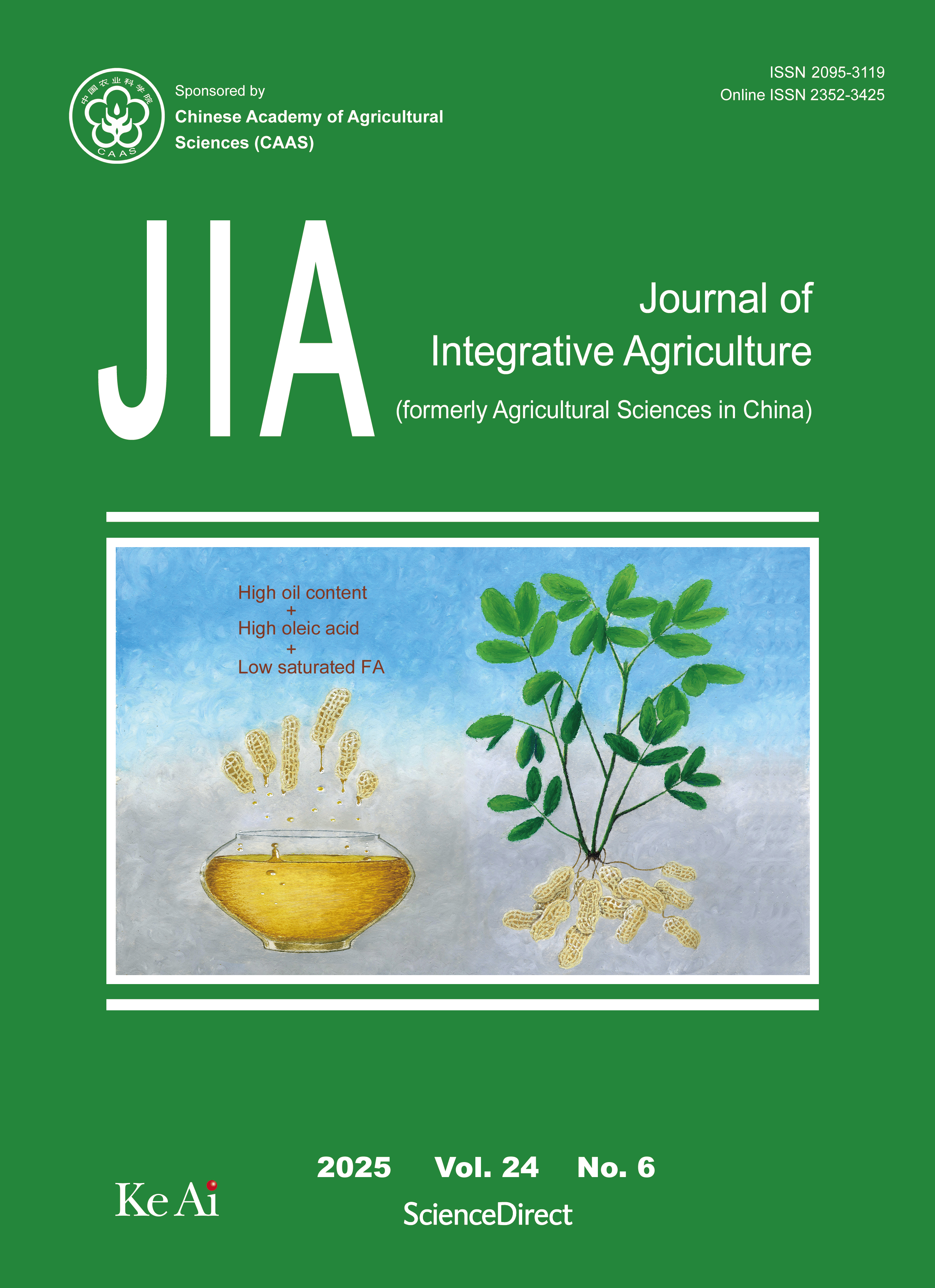Improving grain yield, nitrogen use efficiency and radiation use efficiency by dense planting, with delayed and reduced nitrogen application, in double cropping rice in South China
相似文章
-
Studies on Seed Setting Stability in Associated with Temperature for a Two-Line Hybrid Rice, Liangyoupeijiu [Lu Chuan-gen, ZONG Shou-yu, ZOU Jiang-shi] 水稻科学(英文版) 2004,11 (4) 191-194
-
Crop Yield Response to Water and Fertilizer in Loess Tableland of China: A Field Research [LIU WEN-ZHAO, LI YU-SHAN] 土壤圈(英文版) 1995,5 (3)
-
Slight shading after anthesis increases photosynthetic productivity and grain yield of winter wheat (Triticum aestivum L.) due to the delaying of leaf senescence [Xu Cai-long, Tao Hong-bin, Wang Pu, Wang Zhen-lin] 农业科学学报(英文版) 2016,15 (1) 63-75
-
Effects of Different Tillage Systems on Soil Properties, Root Growth, Grain Yield, and Water Use Efficiency of Winter Wheat (Triticum aestivum L.) in Arid Northwest China [Huang Gao-bao, Chai Qiang, Feng Fu-xue, Yu Ai-zhong] 农业科学学报 (英文) 2012,11 (8)
-
Postponed and reduced basal nitrogen application improves nitrogen use efficiency and plant growth of winter wheat [Tian Zhong-wei, Liu Xiao-xue, Gu Shi-lu, Yu Jin-hong, Zhang Lei, Zhang Wei-wei, Jiang Dong, Cao Wei-xing, Dai Ting-bo] 农业科学学报 (英文) 2018,17 (12)
-
Effects of different mechanical direct seeding methods on grain yield and lodging resistance of early indica rice in South China [Wang Wen-xia, Du Jie, Zhou Yan-zhi, Zeng Yong-jun, Tan Xue-ming, Pan Xiao-hua, Shi Qing-hua, Wu Zi-ming, Zeng Yan-hua] 农业科学学报 (英文) 2021,20 (5)
-
Interactive Effects of Silicon and Potassium Nitrate in Improving Salt Tolerance of Wheat [Bybordi, Ahmad] 农业科学学报 (英文) 2014,13 (9)
-
Effects of Phosphorus Application in Different Soil Layers on Root Growth, Yield, and Water-Use Efficiency of Winter Wheat Grown Under Semi-Arid Conditions [Kang Li-yun, Yue Shan-chao, Li Shi-qing] 农业科学学报 (英文) 2014,13 (9)
-
Net energy yield and carbon footprint of summer corn under different N fertilizer rates in the North China Plain [Wang Zhan-biao, Wen Xin-ya, Zhang Hai-lin, Lu Xiao-hong, Chen Fu] 农业科学学报 (英文) 2015,14 (8)
-
Integrated management strategy for improving the grain yield and nitrogen-use efficiency of winter wheat [Xu Hai-cheng, Dai Xing-long, Chu Jin-peng, Wang Yue-chao, Yin Li-jun, Ma Xin, Dong Shu-xin, He Ming-rong] 农业科学学报 (英文) 2018,17 (2)




